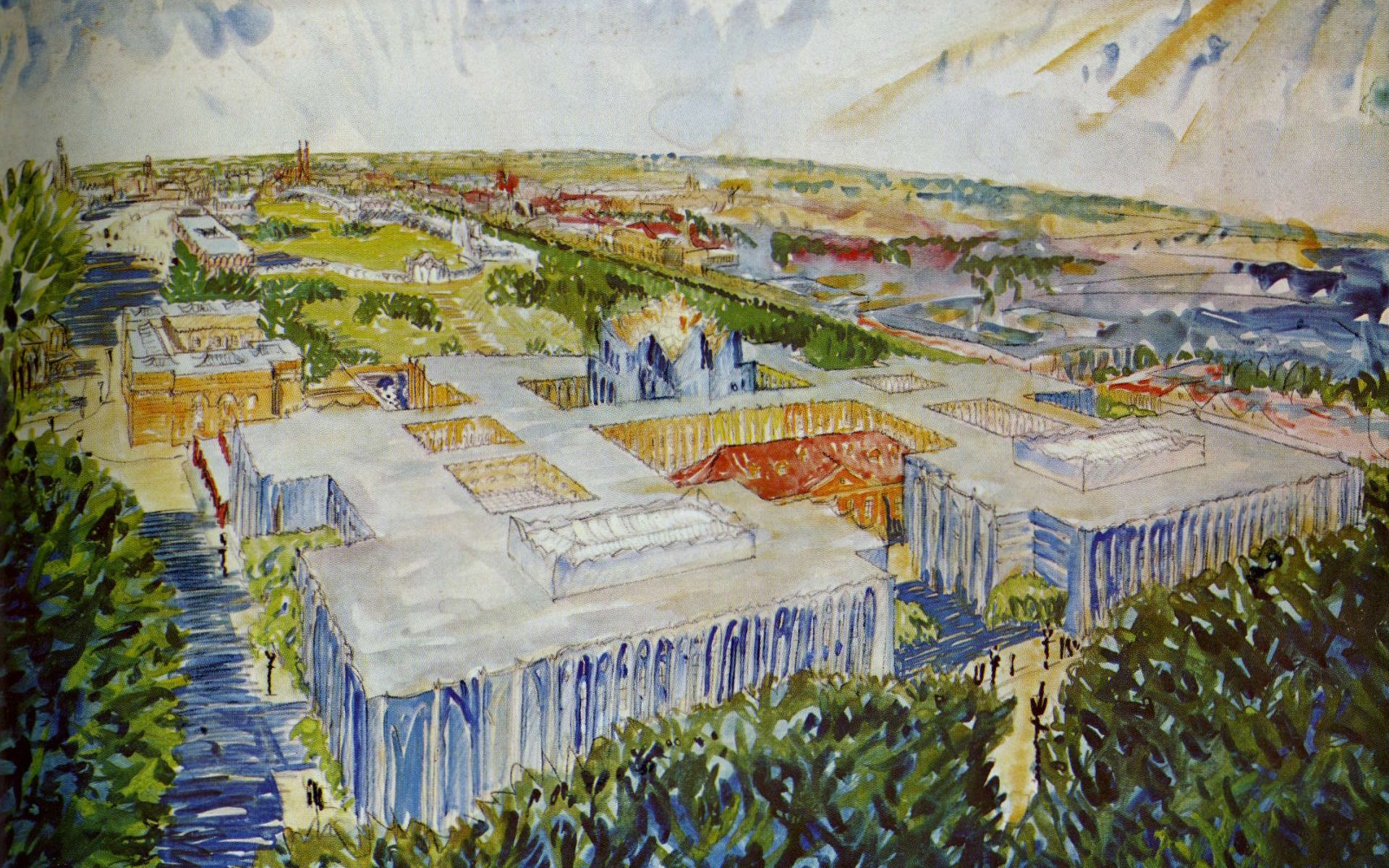Hans Scharoun, Design submitted for the German Hygiene Museum competition in 1920, with the Zwinger in the background, Archiv der Akademie der Künste Berlin.
Hans Scharoun (1893-1972), one of the great German architects of the 20th century, took part in the competition for the German Hygiene Museum in Dresden in his youth. This expressionist watercolour shows a building with an extensive plan including a striking crystalline form, in the perspective of the Zwinger buildings. In the background, the silhouettes of the towers and domes of the historic city can be seen.
As early as the Belle Epoque, the creation of a Hygiene Museum was being envisaged in Dresden. The project was initiated by Karl August Lingner, an industrial chemist who developed the famous Odol mouthwash. His commercial success enabled him to organise international hygiene exhibitions in Dresden, which attracted large audiences.
Due to the vicissitudes of history, the museum was not built until 1930. The huge building was not erected on the site that Hans Scharoun had originally assigned to it in his image, but on the other side of the historic city centre, opposite the Großer Garten. Its sheer size and power help us understand why Wilhelm Kreis, its architect, was one of Hitler’s favourite architects after 1933.
Sonia de Puineuf

